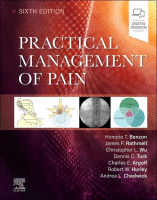Physical Address
304 North Cardinal St.
Dorchester Center, MA 02124

~ The management and treatment of the pain in the emergency department (ED) is unique from that experienced in other medical settings. Not only is pain often acute as opposed to chronic, but it is often unexpected and sudden. In…

Background and Introduction Of the myriad problems that present to the primary care clinician, pain is the most common and arguably the most concerning. Since pain can herald something as serious as a heart attack or as routine as an…

Risk of infection in interventional pain procedures David A. Provenzano, Michael C. Hanes Introduction Infections related to interventional pain procedures and implantable devices vary considerably based on the target location, causative pathogens, anatomic structures involved, collateral damage, and severity. Surgical…

Key Points The biologic effects of ionizing radiation are proportional to the time of exposure, whereas radiation exposure is inversely proportional to the square of the distance from the radiation source. Modern fluoroscopy units typically employ ABC, which automatically adjusts…

## Intrathecal drug delivery for the treatment of pain is an outgrowth of pioneering research into spinal cord mechanisms and receptors that modulate nociceptive signal transmission to and within the central nervous system. Since the 1970s, researchers have identified the…

Introduction Neuromodulation for chronic pain control has been used for several decades but recently has received much clinical interest mainly based on published improved therapy outcomes. Spinal cord (SCS), dorsal root ganglion (DRG), and peripheral nerve stimulation (PNS) for chronic…

Overview Pain is a complex and serious medical condition, with estimates from the Centers for Disease Control and Prevention in 2016 showing 50 million (20.4%) United States adults experiencing chronic pain, among whom 19.6 million experience high impact pain that…

One in two women and one in five men aged >50 years will experience an osteoporotic fracture. These can result in substantial patient pain, morbidity, and healthcare utilization. A new osteoporotic vertebral fracture occurs every 22 s; 1.4 million occur…

Overview and Pathophysiology of Myofascial Pain Syndromes Myofascial pain is a common source of pain in the neck, low back, and other areas of the body. The term “myofascial pain” encompasses many different painful conditions, including muscle strain, myofascial trigger…

Introduction Targeted treatment of peripheral joint pain because of musculoskeletal disorders involves the utilization of intraarticular (IA) injections as well as ablative procedures. IA joint and bursa injections are used to treat pain in the joint and surrounding soft tissue…